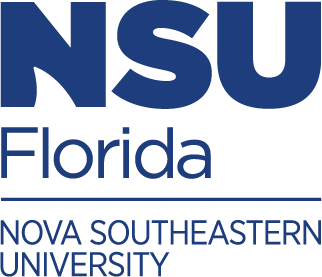Newswise — FORT LAUDERDALE/DAVIE, Fla. – Look out would-be thieves and criminals, there’s another tool that could soon be in the law enforcement investigator’s toolbox. Researchers have discovered that every individual’s microbial community (or “microbiome”) found on their body is as unique as human fingerprints or DNA, and this bacterial signature can be left behind even if the aforementioned forensic markers are not.
Jose Lopez, Ph.D., a research scientist at Nova Southeastern University’s (NSU) Halmos College of Natural Sciences and Oceanography worked with colleagues from the University of Illinois at Chicago and the University of Chicago as part of The Burglary Microbiome Project. The project was funded by the National Institute of Justice.
“We all have bacteria living on us, no matter how much we wash our skin,” Lopez said. “And most of the microbes are harmless and even can stop bad bacteria from colonizing. Everyone’s microbiome is different; we slough off millions of microbial cells every hour into our surroundings (surfaces and air), so we’re leaving our microbial signature wherever we go.”
Joining Lopez on this project were Jack Gilbert, Ph.D., the faculty director of The Microbiome Center at the University of Chicago (lead primary investigator), Jarrad Hampton-Marcell, a Ph.D. candidate at the University of Illinois at Chicago and George Duncan, Ph.D., an adjunct professor in NSU’s Department of Justice and Human Services and Halmos College.
The approach to the study was relatively simple: the researches took samples from people’s noses and hands and then various surfaces from their homes to create their baseline microbiome. Then they conducted mock burglaries by people who would not otherwise be in those homes. Using the “bacterial assemblages” for each subject, models were created to determine the accuracy of predicting a non-resident being in a given home. In other words, they compared the known microbiome with evidence of foreign microbiome traces in the homes. The idea is having this information, if the authorities apprehend a suspect, they can compare their microbiome to the foreign one from the crime scene.
According to researchers, humans emit approximately 36 million microbial cells every hour into their immediate environment. This gives researchers the chance to trace these signatures back to their originating source. It had already been established that it was possible to track the microbial exchange between an individual and environmental surfaces by matching the microbial signature on individual participants’ finger tips to keys on a computer keyboard, as well as other personal devices.
While there is still more research to be done, the initial results are very promising.
“This study is one of the first to use the microbiome as a forensic tool using unique markers rather than variances in microbial community structure,” said Hampton-Marcell, “With further improvement in detection of stable markers, the human microbiome may serve as an additional tool for human profiling and crime scene investigations.”
Be sure to sign up for NSU’s RSS feed so you don’t miss any of our news releases, guest editorials and other announcements. Please sign up HERE.
###
About Nova Southeastern University (NSU): Located in beautiful Fort Lauderdale, Florida, NSU is ranked among U.S. News & World Report’s Top 200 National Research Universities and is a dynamic, private research university providing high-quality educational and research programs at the undergraduate, graduate, and first-professional degree levels. Established in 1964, NSU now includes 16 colleges, the 215,000-square-foot Center for Collaborative Research, a private JK-12 grade school, the Mailman Segal Center for Human Development with specialists in Autism, the world-class NSU Art Museum Fort Lauderdale, and the Alvin Sherman Library, Research and Information Technology Center, which is Florida’s largest public library. NSU has campuses in Fort Lauderdale, Fort Myers, Jacksonville, Miami, Miramar, Orlando, Palm Beach, and Tampa, Florida, as well as San Juan, Puerto Rico, while maintaining a presence online globally. Classified as a research university with “high research activity” by the Carnegie Foundation for the Advancement of Teaching, NSU is one of only 50 universities nationwide to also be awarded Carnegie’s Community Engagement Classification, and is also the largest private institution in the United States that meets the U.S. Department of Education’s criteria as a Hispanic-serving Institution. For more information, please visit www.nova.edu.
About NSU’s Halmos College of Natural Sciences and Oceanography: The college provides high-quality undergraduate (bachelor’s degree) and graduate (master’s and doctoral degrees and certificates) education programs in a broad range of disciplines, including marine sciences, mathematics, biophysics, and chemistry. Researchers carry out innovative basic and applied research programs in coral reef biology, ecology, and geology; fish biology, ecology, and conservation; shark and billfish ecology; fisheries science; deep-sea organismal biology and ecology; invertebrate and vertebrate genomics, genetics, molecular ecology, and evolution; microbiology; biodiversity; observation and modeling of large-scale ocean circulation, coastal dynamics, and ocean atmosphere coupling; benthic habitat mapping; biodiversity; histology; and calcification. The college’s newest building is the state-of-the-art Guy Harvey Oceanographic Center, an 86,000-square-foot structure filled with laboratories; offices; seminar rooms; an auditorium; and indoor and outdoor running sea water facilities. Please visit cnso.nova.edu for more information.
